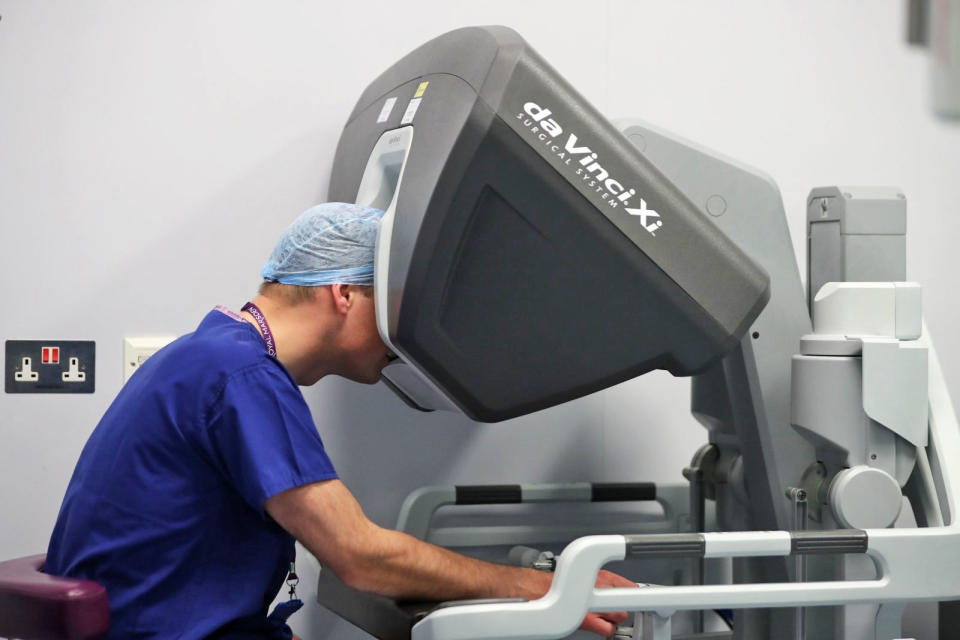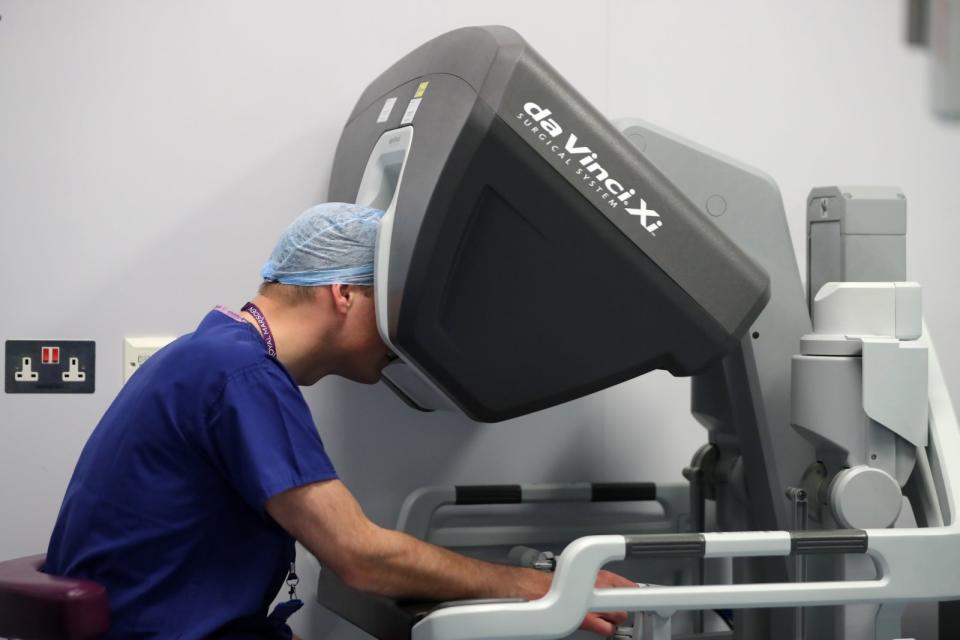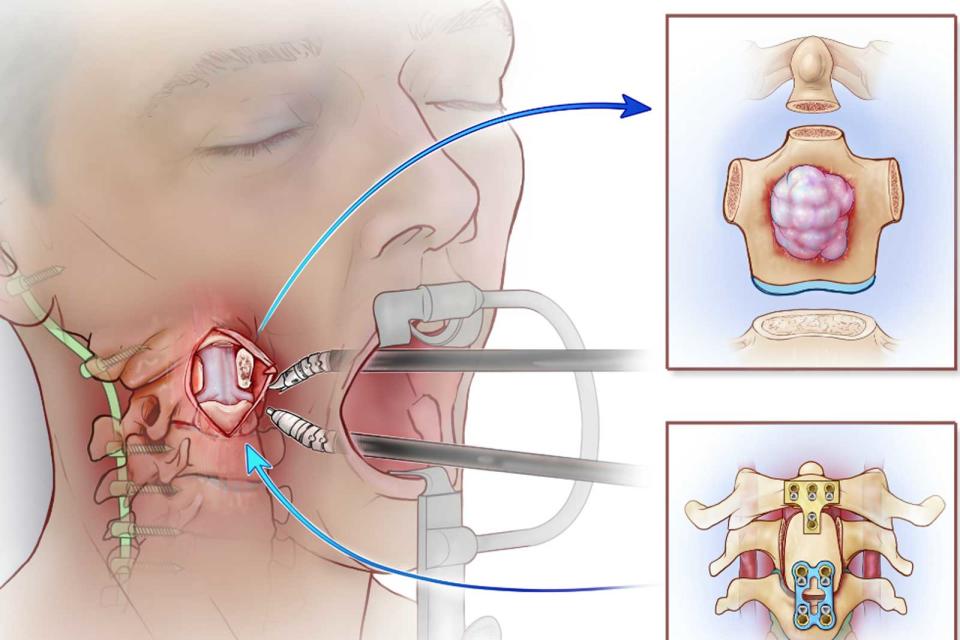Penn doctors perform the first robot-assisted spinal surgery
Robotic arms made the operation possible.
Surgical robots are capable of feats that even the most skilled doctors can't manage, and the University of Pennsylvania just offered a textbook example. The school has confirmed that it performed the first-ever robot-assisted spinal surgery, using Da Vinci's robotic arms to remove a rare tumor where patient Noah Pernikoff's spine met his skull. The two-day operation, which took place in August 2017, started with neurosurgeons preparing the spine using ultrasonic cuts, and then brought in the robot to clear a path for removing the tumor through Pernikoff's mouth (you can see a slightly graphic illustration below). The team then used some of Pernikoff's own bone to reconstruct the spinal column section they'd removed.
The robot was particularly vital in this case. If surgeons weren't careful, they could have compromised Pernikoff's spine and left him paralyzed or without important functions. They also had to be sure they removed the entire tumor lest it grow back. Thankfully, the procedure paid off -- Pernikoff is back to work.
This wasn't quite a triumph, since humans were still heavily involved. It's going to be a long while before mostly or completely robotic surgery is commonplace due to the complexities of procedures like this. Still, it's heartening to know that robots are around to enable extremely delicate operations that might otherwise be difficult or impossible.





